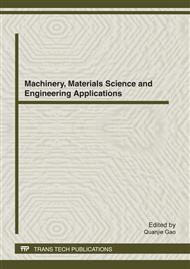[1]
H. Altenbach, G. Kolarow, O. K. Morachkovsky and K. Naumenko, Computational Mechanics, Vol. 25, (2000), P. 87-98.
DOI: 10.1007/s004660050018
Google Scholar
[2]
R. Mustata, R.J. Hayhurst, D.R. Hayhurst and F. Vakili-Tahami, Arch Appl Mech, Vol. 75, (2006), P. 475-495.
DOI: 10.1007/s00419-005-0423-4
Google Scholar
[3]
D.R. Hayhurst, R.J. Hayhurst and F. Vakili-Tahami, PROC. R. SOC. A, Vol. 461, (2005), P. 2303-2326.
Google Scholar
[4]
X. Ling, S.T. Tu and J.M. Gong, International Journal of Pressure Vessels and Piping, Vol. 77, (2000), P. 243-248.
Google Scholar
[5]
D.R. Hayhurst, Modelling Simul. Mater. Sci. Eng., Vol. 2, (1994), P. 421-438.
Google Scholar
[6]
A.A. Becker, T.H. Hyde, W. Sun and P. Andersson, Computational Materials Science, Vol. 25, (2002), P. 34-41.
Google Scholar
[7]
R.J. Hayhurst, F. Vakili-Tahami and D.R. Hayhurst, International Journal of Pressure Vessels and Piping, Vol. 86, (2009), P. 475-485.
DOI: 10.1016/j.ijpvp.2009.04.015
Google Scholar
[8]
L.E. Schwer, Guide for Verification and Validation in Computational Solid Mechanics, 1st ed. The American Society of Mechanical Engineers Standard Committee, USA. July (2007).
Google Scholar
[9]
Y. Tao, Y, Masataka and H. J. Shi, International Journal of Pressure Vessels and Piping Vol. 86, (2009), P. 578–584.
Google Scholar
[10]
M.S. Herrn and G. Yevgen, Development of a creep-damage model for non-isothermal long-term strength analysis of high-temperature components operating in a wide stress range, ULB Sachsen-Anhalt, Kharkiv, July (2008).
Google Scholar
[11]
A. Holm, N. Konstantin and G. Yevgen, in Proceeding in Applied Mathematics and Mechanics, (2008).
Google Scholar
[12]
M. Hanke and A. Dawani, Simulation eines Kielluftschiffes: Berechnung der Hüllenstabilität, Proceedings of the 17th CAD-FEM Users' Meeting, Sonthofen, (1999).
Google Scholar
[13]
A.A. Becker, T.H. Hyde and W. Sun, FE-DAMAGE Users Mannual, University of Nottingham, UK, (1994).
Google Scholar
[14]
D. R., Hayhurst, P. R. Dimmer and G. J. Morrison, Trans R Soc London A, Vol. 311, (1984), P. 103–129.
Google Scholar
[15]
K. Naumenko and H. Altenbach, Modeling of Creep for Structural Analysis, Springer Berlin Heidelberg New York, (2004).
Google Scholar
[16]
M.T. Wong, Three-Dimensional Finite Element Analysis of Creep Continuum Damage Growth and Failure in Weldments, PhD thesis, University of Manchester, UK, (1999).
Google Scholar
[17]
L. Machiels and M.O. Devile, ACM Transactions on Mathematical Software, Vol. 23, (1997), P. 32-49.
Google Scholar
[18]
A. Bellen and M. Zennaro, Mathematik, Vol. 47, (1985), P. 301-316.
Google Scholar
[19]
H.T. Yao, et al., Nuclear Engineering and Design, Vol. 55, (2007), P. 1969-(1986).
Google Scholar
[20]
I.M. Smith and D.V. Griffiths, Programming the Finite Element Method (FOURTH EDITION), JohnWiley& Sons, Ltd, (2004).
Google Scholar
[21]
A. Edelman and H. Murakami, Math. Comp, Vol. 64, (1995), P. 763-776.
Google Scholar
[22]
J. E. Akin, Engineering Computations, Vol. 16 (1999), P. 26-48.
Google Scholar
[23]
NAG Fortran Library, The Numerical Algorithms Group Ltd, Oxford, UK.
Google Scholar


